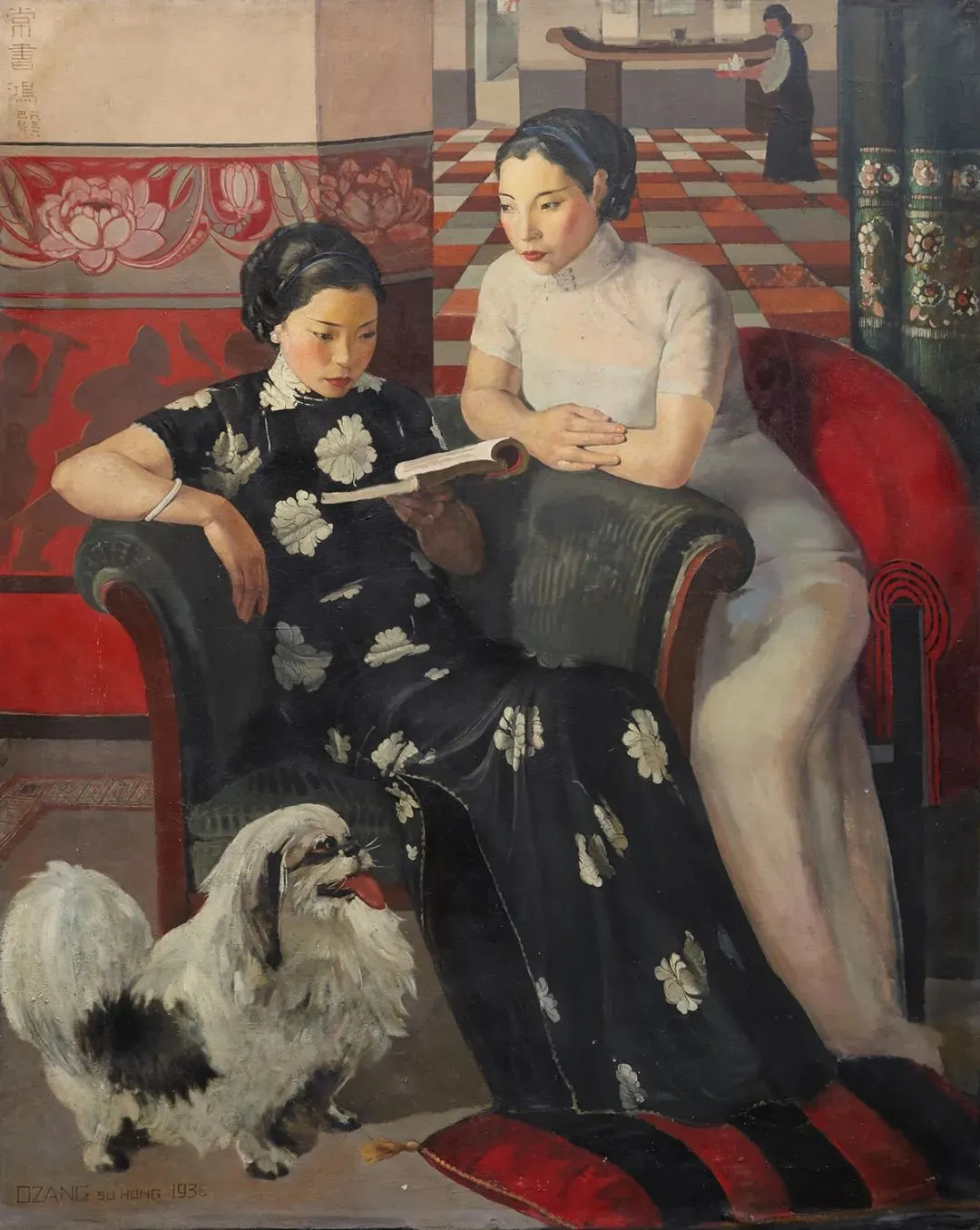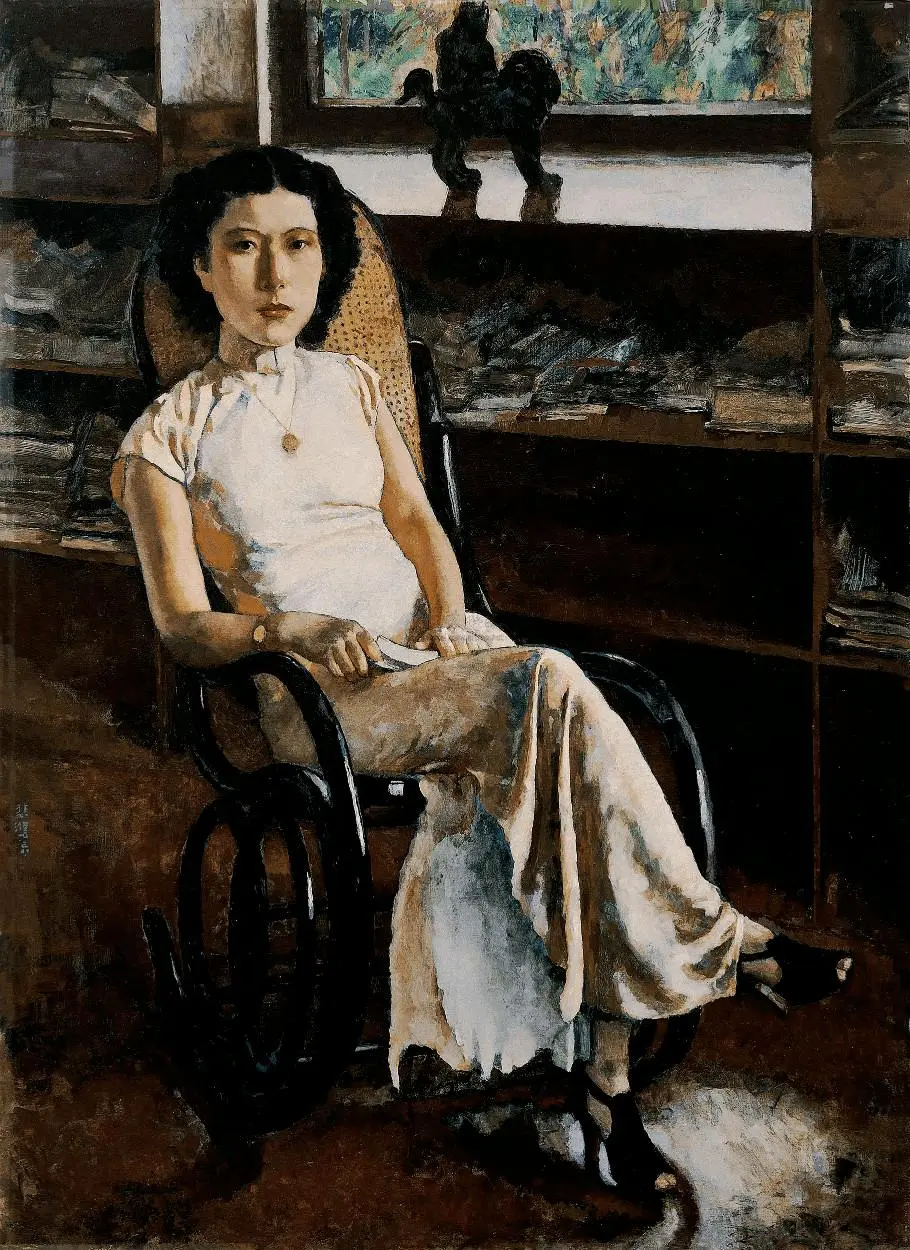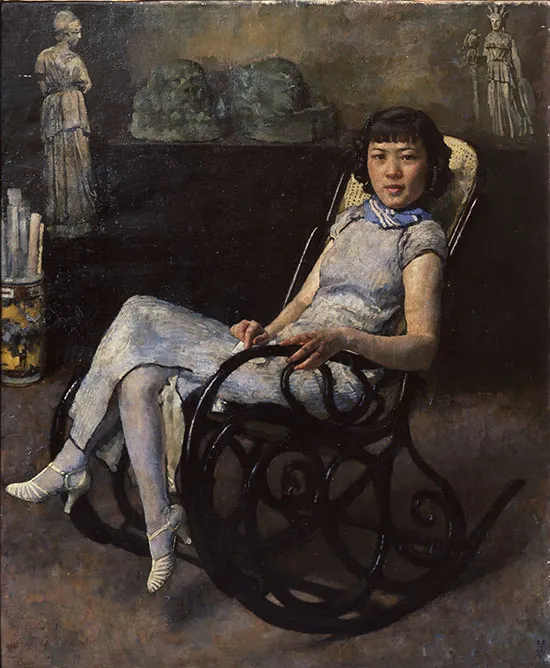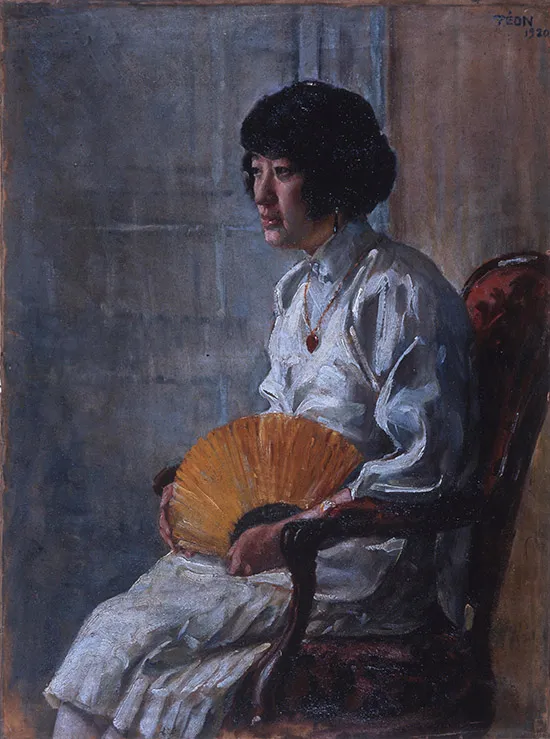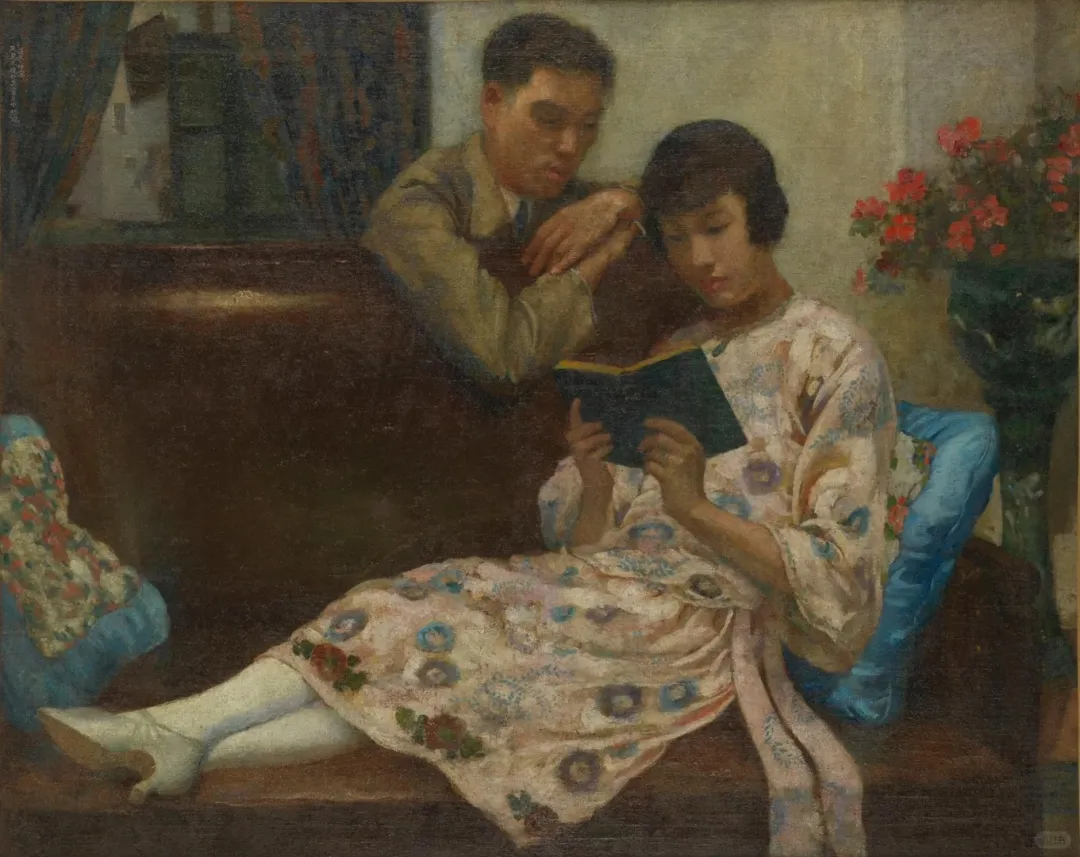Qipao, with its profound cultural heritage and sartorial charm, has served as a unique muse for countless artists, inspiring diverse expressions and creations. Today, I'd like to explore the different charms and beauty of Qipao as depicted in paintings.
Xu Beihong, a foundational figure in modern Chinese art, was one of the most influential painters in 20th - century China. He pioneered the introduction of Western realism into Chinese painting, blending the 'linear modeling' of Chinese art with Western 'light and shadow structures,' innovating without losing essence. His oil painting 'Portrait of Miss Jenny' is widely regarded as his best work in terms of color. Painted in 1939 at the request of the Belgian Vice - Consul in Singapore, it depicts Miss Jenny in a light - toned, figure - hugging Qipao. The satin's fluidity and the floral print are enhanced by impressionistic touches. Behind this masterpiece, Xu showed his dedication to supporting the anti - Japanese war effort. He often exhibited his works in Southeast Asia to raise funds for war orphans.
Portrait of Sun Duoci
This portrait depicts Xu's student, Sun Duoci, in an ink - wash - style printed Qipao. The side slit highlights her legs, and she is paired with stockings and buttoned heels, accented by a blue scarf. The harmonious yellow - blue color palette is striking and vivid.
Portraits of Jiang Biwei
Xu's French period marked his peak in oil painting. During this time, he created many portraits of his wife, Jiang Biwei. These works capture her beauty in various Qipao styles, blending Chinese and Eastern charm. The Qipao designs, though slightly different from modern ones, share similar silhouettes and details. For example, the layered tops and skirts, with wide sleeves (Dao Daxiu, 倒大袖) emphasizing slender arms and flowing elegance. The prints, from small florals to polka dots, highlight the garment's uniqueness as early as the 1920s.
Chang Shuhong, renowned as the 'Guardian of Dunhuang,' was also a trailblazing artist who studied in France. His 1936 oil painting 'The Two Sisters,' which won a silver award at the French National Spring Salon, depicts a leisurely afternoon scene. The sisters are in classic long Qipaos—one black with white flowers and the other white with sheer fabric, creating an Oriental family ambiance. His watercolor 'Republican Era Girl' is lighter and more transparent, perfectly capturing the girlish charm in a green Qipao amidst pink flowers and green leaves.
Painter's Family
'Painter's Family,' another of Chang's 1930s oils, portrays his wife Chen Zhixiu in a geometric - print Qipao and their daughter Chang Shana with an ear - length bob. It reflects the diverse Qipao artistry of that era.
This concludes today's sharing on Qipaos depicted by male painters of the last century. Next time, we'll explore female painters' perspectives on Qipao beauty, uncovering more hidden historical stories. Through these paintings, we can glimpse the rich cultural connotations and unique aesthetics of Qipao in different historical periods, and look forward to more discoveries about the beauty of Qipao in the works of female painters.
